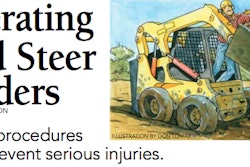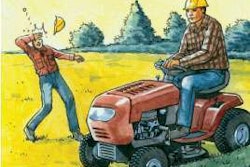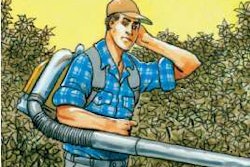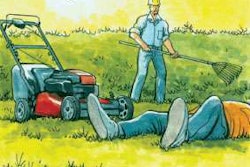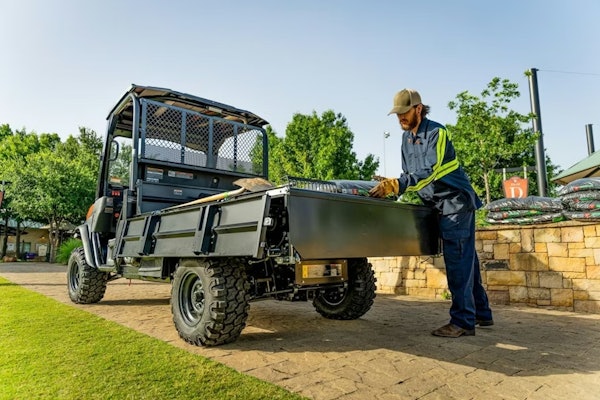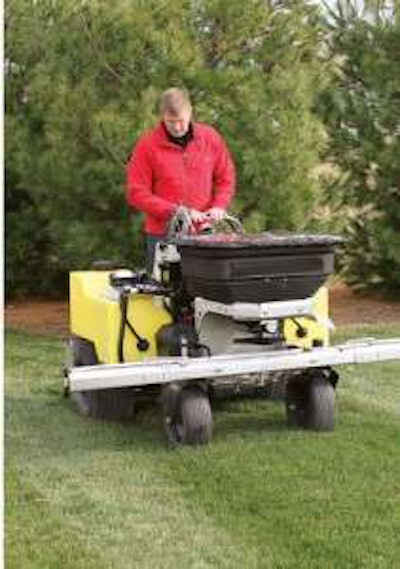
Kill Weeds, Not Time
By Lauren Heartsill Dowdle
Of course, there’s more to applying chemicals and fertilizer than filling up a spreader or sprayer and riding or pushing it around the lawn. Spray too much in areas, and you risk striping. Spread too little, and you could miss problem areas and have to return to the property for remedial service.
LT Rich’s sprayers travel up to 8 mph and make quick work of larger properties.“Many of the chemicals used now are expensive,” says Andy Walters, LT Rich Products. “If you’re off with the amount of chemicals you use just the smallest bit, you can damage the lawn, miss some of the weeds or waste a lot of money.”
Here are ways to cut costs and time on your next chemical- or fertilizer-application project.
Determining equipment needs
Your first decision is whether the project requires a spreader or sprayer. Typically, granular products need to be watered into the soil to make contact with the weed’s root system. So for dry conditions, turn to a sprayer to reach plants and weeds more efficiently, says Jeff Kendall, vice president of sales and marketing at EarthWay Products.
“Calibration is the make-or-break-it part of the business.”
APPROXIMATE GRANUAL CALIBRATIONRotary spreaders continue to be the most popular and provide even, consistent applications. But drop spreaders may still have a niche in your equipment line. Ideal for parking lots and islands, drop spreaders don’t throw the granules, so they cut back on products hitting cars and being lost on pavement.
Maintain then calibrate
To keep your equipment working to the best of its ability, perform regular maintenance. If a spreader or sprayer is powder-coated, it’s protected on the outside, but corrosion starts in the tubing, Walters says. To prevent this, spray WD-40 or Fluid Film inside the tubing. “If you keep up with maintenance, you won’t have problems,” he says.
After maintaining the tubing, Walters says the next step is to calibrate the equipment. “Getting the equipment calibrated is high on the list. You want to get the most accurate spread possible. Calibration is the make-or-break-it part of the business.”
To get the calibration correct, know the sprayer’s ground speed, pressure and tip size. For a detailed look at how to calibrate, reference the chart at totallandscapecare.net/11063/. See part of the chart and how the fertilizer overlaps and throws back to the tire tracks on the right.
Push vs. ride-on
For large, flat properties, choose a ride-on spreader or sprayer to minimize time and physical exertion required for the project. Another benefit is that you can track your speed and how wide you’re spreading or spraying with a ride-on.
See entire chart at totallandscapecare.net/11063/“Everyone pushes equipment at different speeds,” Walters says. “Your rate constantly changes, depending if you’re going up or downhill. With ride-on equipment, the ground speed stays the same, making it easier to calibrate.”
When you are applying fertilizer and chemicals to a smaller lot, a push spreader can help you reach tight spaces. They are also ideal for wet conditions or hilly terrains. But, be mindful of your overlap paths with push spreaders, which may be harder to see.
“If you overlap too much, you get a dark green striping,” Walters says, which are especially noticed on ball fields or other well-manicured lawns.
With push spreaders, it can also be difficult to determine how fast you or your crew are walking. So it’s imperative to keep a constant walking speed to prevent inconsistent applications.
EarthWay Products’ spreaders are designed with gear ratios that correspond to the wheel size.“With our products, speed only becomes an issue when you go slower,” Kendall says. “You’re at optimum range going 2 to 4 mph, with 3 mph being a comfortable walking speed. The fertilizer comes out at the speed you push the equipment.”

